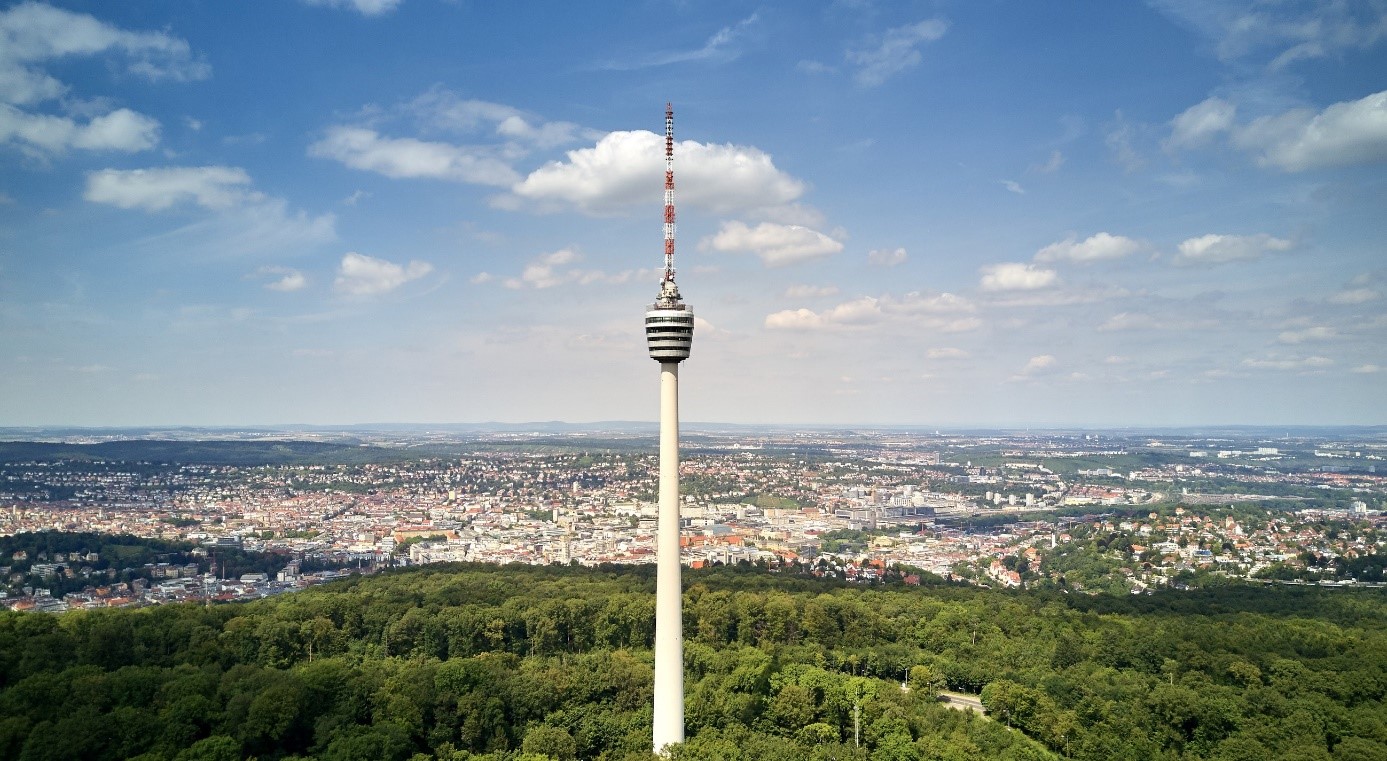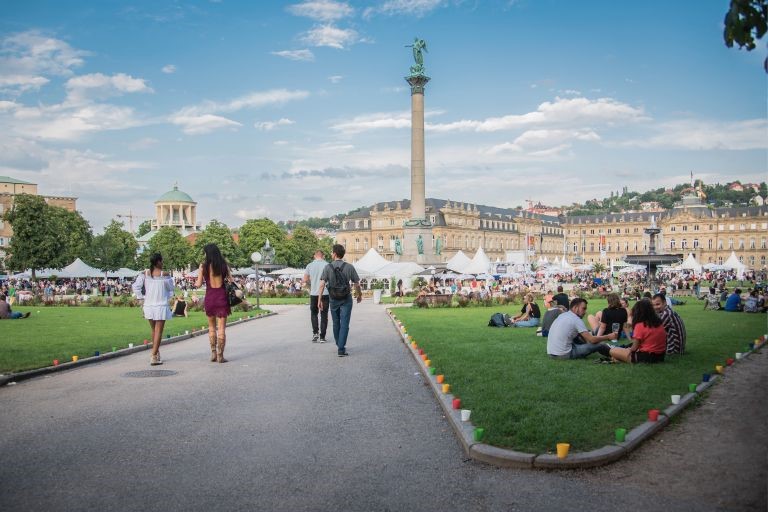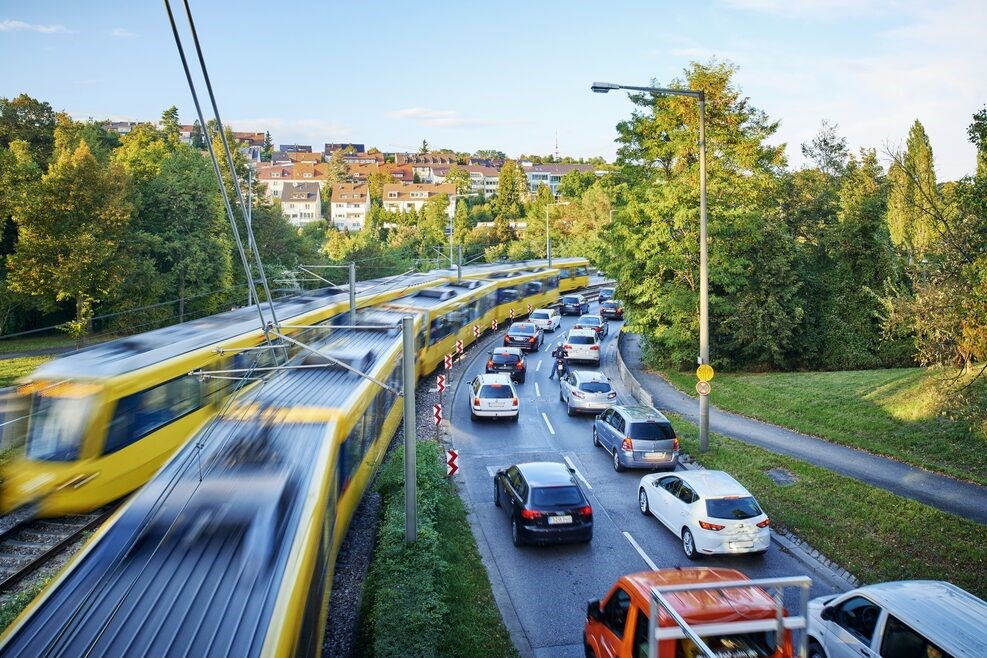The Stuttgart Region is one of the leading economic areas of the world with a well-balanced mix of global brands.
The view of the local economy is also impressive: The Stuttgart region is characterized by a broad entrepreneurial diversity - a balanced mix of global brands and extremely innovative medium-sized companies. In addition, Stuttgart has a first-class research infrastructure with many leading universities and institutes that develop cutting-edge technologies.
Stuttgart boasts an excellent local public transport system which offers high transport standards and is also embedded in the regional public transport system. The city has been promoting sustainable mobility for many years. Stuttgart's mobility therefore offers a diverse public transport network with good connections to Stuttgart Airport, Bus and Rail and Bicycle Rout.
Sustainable mobility
The need for mobility is a very important topic in Stuttgart that is widely discussed by the citizens. The core issue is how new and alternative mobility concepts can sustainably improve the quality of life in the State Capital. In the end, this means: less noise, less congestion, less stress and fewer air pollutants.
Stuttgart is modern, international, urban, cosmopolitan, and well known for its innovations. The city is well acquainted with all its transport-related challenges, which result from high mobility demand of both citizens and the economy, but also with solutions for urban mobility aiming to increase the quality of life and to reduce the negative impact of traffic on the environment. Today, Stuttgart boasts an excellent local public transport system that offers high transport standards and which is embedded in the regional public transport system. Due to its topography, the city has problems with air quality which are being tackled by the municipality through major efforts. Measures involve clean air and noise reduction programmes including limited access zones, traffic calming zones, speed reduction on main roads, parking management, public transport priority schemes and traffic management amongst others. To further reduce traffic congestion various incentives are being implemented, such as park and ride stations, corporate mobility management assessment and additional offers in public transport.
Action plan with 100 concrete measures
The basis of the municipal strategy is the action plan “Sustainable mobility in Stuttgart”, divided into nine fields, which was presented by the Mayor and approved by the municipal council. The fields of action include local public transport, motorised individual transport, walking or cycling, commercial transport, commuter traffic, as well as intermodality and networking. The strategy of the action plan has been drawn up for the longer term and combines instruments of urban planning with traffic planning, traffic management and infrastructure policy.
An important approach, for instance, is to reduce car traffic in the valley basin by 20 percent. This means: how can car traffic be avoided, re-directed and controlled and designed in future in an environmentally friendly way? This is not a question of pro or contra car, but rather how well networked mobility can be established and organised. After all, traffic development nowadays is much more than dividing traffic into cars, trams, buses, cyclists and pedestrians.
Therefore, urban traffic of the future must be considered in a related context. How can we find a sensible combination for the various means of transport? How environmentally friendly are the mobility offers? How does transport affect urban design and its quality of life? The aim is to provide the Stuttgart residents with customised mobility offers – these should be comfortable, inexpensive and environmentally friendly. To this end, the action plan “Sustainable mobility in Stuttgart” contains more than 100 concrete measures which will be implemented in the short or medium term.
On the international level, the City of Stuttgart coordinates the global network Cities for Mobility and participates in several European networks and programs. Stuttgart decided to join the FCCP-Project in order to find out the advantages and disadvantages of fuel cell driven cargo-bikes when they are used by technical departments of the municipality.
The main objective is to find out during these pilots if the fuel cell technology helps to improve the transport offer for official works and the performance of some technical facilities (such as the Forest Department and the Main Sewage Plant of Mühlhausen). The experiences and knowledge gathered will be presented to the City Council and transferred to other technical departments of Stuttgart Municipality as well as to logistic companies in the city and its region.



